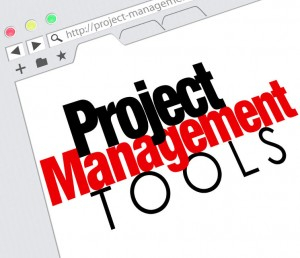
 Data Structure
Data Structure Networking
Networking RDBMS
RDBMS Operating System
Operating System Java
Java MS Excel
MS Excel iOS
iOS HTML
HTML CSS
CSS Android
Android Python
Python C Programming
C Programming C++
C++ C#
C# MongoDB
MongoDB MySQL
MySQL Javascript
Javascript PHP
PHP
- Selected Reading
- UPSC IAS Exams Notes
- Developer's Best Practices
- Questions and Answers
- Effective Resume Writing
- HR Interview Questions
- Computer Glossary
- Who is Who
Planning and Scheduling Tools for Project Management
We are living in a fast paced competitive world, where everybody wants his work to be completed as soon as possible. The industries across the world also have not escaped from this mindset. The customers who buys the products and services; the companies who provides those, and the employees who works on those projects, everybody has that pressure to get the job done on or before time. So it is the need of the hour to prepare project schedule more accurately and cautiously.
Let’s discuss a scenario which can happen to any project, if proper schedule management processes are not in practice.
Business Scenario-Problem

Brend is a responsible Project Manager, leading an e-commerce project. During the half way of the project, Brend and his team noticed that the project schedule is lagging behind. Several activities are not yet completed and one of the major milestone is just around the corner.
Any delay in delivering of major milestone can impact his and the company’s relationship with the client. This can hamper Brend’s reputation in his company. In case of any delay in the upcoming milestone can upset the client, and Brend hates to say those regretful words to the customer “Sorry! We need more time”.
The Solution
Brend called an urgent meeting with his team and evaluate the impact of the delay on the project’s triple constraints- Scope, Schedule and Cost, along with the Quality. Once the impacts are assessed correctly, Brend checked the resource availability and limitations, also re-calculated and analyzed the risk plan with current impacts and prepared his strategy to deal with the delay in the project.
There are two process Brend can apply in the current situation to get the schedule on track, he can add more available resources in the project to speed up the remaining work, but additional resources may not have the required knowledge. Another possibility is that, the team can examine the critical path and identify the series of activities which can be sequenced in parallel.
Plan your Schedule: Tools and Techniques
The past experiences of the experts on knowledge areas, application areas, industry etc, will help the Project Manager to get some rough ideas of the possible time required for specific activities.
While estimating the schedule of the project, some analytical techniques can be used to make it more accurate. The Project Management software tools such as SLIM, SEER-SEM, Enterprise Project Management (EPM) etc. can helps in estimation.
The Project Manager can setup many meetings with the team to develop the schedule of the various activities. Those meetings may include the Project Sponsor, selected team members, selected Stakeholders and others as needed to get more views on the probabilities. In Agile methodology, the “Planning Pokers” techniques are part of one of such meetings to sequence the activities to schedule them more accurately.
Factors that Influence the Schedule Management Plan
There are factors within our organization and outside can influence the schedule management plan. Such as −
The organisation culture should be well understood by its project managers. The Management style and personality can influence the schedule and the overall project.
While preparing the schedule the Project Managers should keep in mind the organisation’s general working conditions and environment, where the project will be executed.
The organisational structures also plays an important role on the project schedule. Mainly there are three types organisation structures, those are −
Functional Organisations − These organisational structures are based on managerial hierarchy grouped into several departments, like Human Resource, Accounts, Engineering, Quality Control, Inventory, Purchasing etc… . Each departments works as a unit and require little or no direct involvement of any other department.
Projectized Organisations − According to the business strategic objectives, some organisations are grouped people and resources across the departments to meet the unique project objective. The resources may have belongs to different departments but grouped together to fulfill the project objective. And, once the project is completed, the resources are release to their respective groups. As the resources are permanently assigned to that project till the completion of it, the Project Managers has an upper hand.
Matrix Organisation − This type of organisational structure is a mix of both functional and projectized structure. In this type of organisation, the Functional Manager has an upper hand than the Project Managers, because the authority over the resources is still lies with the Functional Manager.
Benefits we Gain from Schedule Management Plan
A proper project schedule can help us to predict the realistic timeline for each activity.
The activity duration can be specified, keeping an amount for contingencies.
The measurement of each unit, such as resource hours, days and weeks is defined.
The Project Manager can take help of this plan while reporting the current progress of any specified activities at any stage.
Performance of the work can be measured by taking the defined activities schedule.
Identify the Activities
One of the important aspects of schedule planning is to identify the work packages, which can be further break down to activities that provide the basis of estimation.
There are some tools and techniques which can be used to define those activities.
Tools and Techniques
Decomposition − This is a technique to break down the project scope and deliverable into smaller part from where that can be manageable in better way. The effort needed to complete that work package is called Activity. This process creates the Work Breakdown Structure (WBS), WBS dictionary and activity list.
Rolling Wave Planning − Meticulously plan for the near term with all the details considering the lowest levels of work packages, while for the future work prepare high level plan. This iterative technique is called Rolling wave planning. As we have more clarity for the near term, work packages can be breakdown into activities more easily. While for the future work, the work packages can be breakdown as and when we get the clarity of those work packages.


